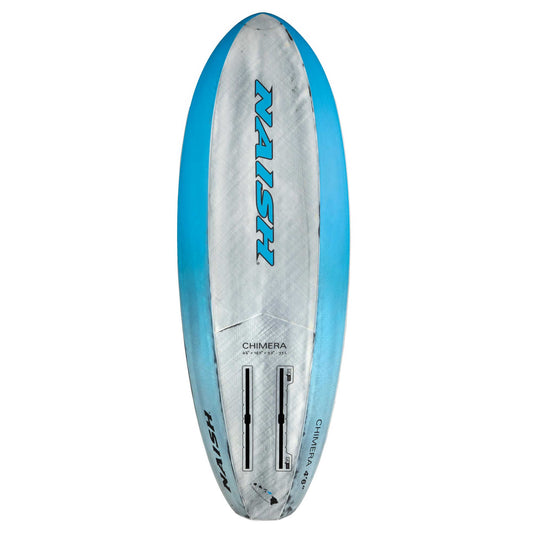Is Wing Foiling Hard? - Poole Harbour Watersports
India HudsonShare
Wing foiling is a (relatively) new, exciting, and rapidly growing water sport. The fast interest into this new water sport stems from the fast that this sports is a blend of windsurfing, kitesurfing, and paddleboarding, making it accessible to beginners and experienced water sport enthusiasts alike.
A key differentiation with wing foiling to other traditional wind sports is that there is no boom or mast, just handles on the wing, as such the equipment is a lot softer and lighter. There is a lot less equipment needed for wing foiling and it has an easier learning curve particularly for beginners in comparison to windsurfing and kitesurfing.
Is Wing Foiling Hard?
Wing foiling can be deemed as hard due to the incorporation of handling a wing, standing on a small volume board and co-ordinating it with being above the water on a hydrofoil. The main challenge will be adjusting to being up on the foil, however as with learning anything new, with time and practice comes progress!
We can reassure you that wing foiling is not too hard, particularly as so many people are getting into this new sport and many have no previous water sport backgrounds, showing that with the right learning tips and equipment this is a sport for everyone to get on with and more importantly enjoy!
However, if you do have previous experience in surfing, windsurfing or kitesurfing, then your learning process will likely be faster than most people’s, simply as you will have some more knowledge on manoeuvring in the wind and balance on the water. This isn’t to say it fast-tracks you straight to foiling, as there are still tips and tricks to learn about each sport.

Can the right kit make it easier?
Whether you have had a few sessions or not, it is good to know what kit you might need as practice makes progress and the best way to do this is with your own kit! Not having the right kit for your SIZE and SKILL level will really impact on how hard you find your progression into wing foiling.
A couple of common kit-related mistakes:
- Starting on a board too small. You want to learn on a board with plenty of volume so that you can comfortably stand on the board and get used to balancing when up on the foil.
- Wing size impacts how easily you will get going. Too small, you will not get enough power to get up, too big, you will have too much power and it will be super hard to control.
- Foil front wing size provides lift, so the bigger the better as a beginner for smooth lifting and landing.
Check out some of blogs we have already written about equipment to reduce the risk of getting the wrong size kit! –
What Do You Need To Start Winging
Beginner Guide to Wing Foiling
Windsurfing to Wing Foiling
Getting into wing foiling from other wind sports can really enhance the learning timescale compared to a complete water sport newbie. The ease of transitioning is considerable, thanks to your already-honed wind skills, balance, and ocean awareness. Although mastering the foil and wing will take some time, most windsurfers pick up wing foiling relatively quickly.
Controlling the inflatable wing's power can feel natural to an experienced windsurfer. Since the wing in wing foiling behaves similarly to the windsurfing sail’s power zones, you’ll already have an instinct for catching and releasing the wind efficiently.
In windsurfing, you already know how to water start and get up onto a planing board, both of which require technique, balance, and wind knowledge. You’ve likely developed good foot positioning and weight distribution over the board. These balance skills will help you when transitioning to a hydrofoil board, which requires stability and subtle weight shifts to control height and direction.
While windsurfing gives you a solid foundation, there are still unique aspects of wing foiling that will take practice:
- Controlling the foil lift: Managing the height and lift of the foil is very different from windsurfing on the surface. Even if you’re great on a board, learning how to “fly” on the foil will take time and subtle balance adjustments.
- Wing Handling: Although the wind fundamentals are similar, handling the free-floating wing is quite different from a fixed windsurfing sail. You’ll need to practice switching hands and angling the wing without relying on a boom or mast.
Key Steps for Beginners in Wing Foiling
- Step 1: Learn how to manoeuvre the wing on land, get used to how you will hold the handles and how to position the wing in specific angles and ways to make use of the wind.
- Step 2: Get on a large, voluminous board with a centre fin (help you go up wind) and become comfortable kneeling on the board and steering with the use of the wing. Then when confident transition to standing.
- Step 3: On-Water Practice until comfortable standing and moving when up.
- Step 4: Size down onto a wing foil board and get planing and moving on the smaller board. With practice the board should pick up speed to get the foil lifting.

In Conclusion:
Wing foiling is moderately challenging, especially during the initial stages of learning the foil. However, the sport is considered more accessible and less technically demanding than windsurfing or kitesurfing. With proper conditions, suitable equipment and some persistence, many beginners can get the hang of it within a few sessions and then enjoy the sensation of flying above water!










